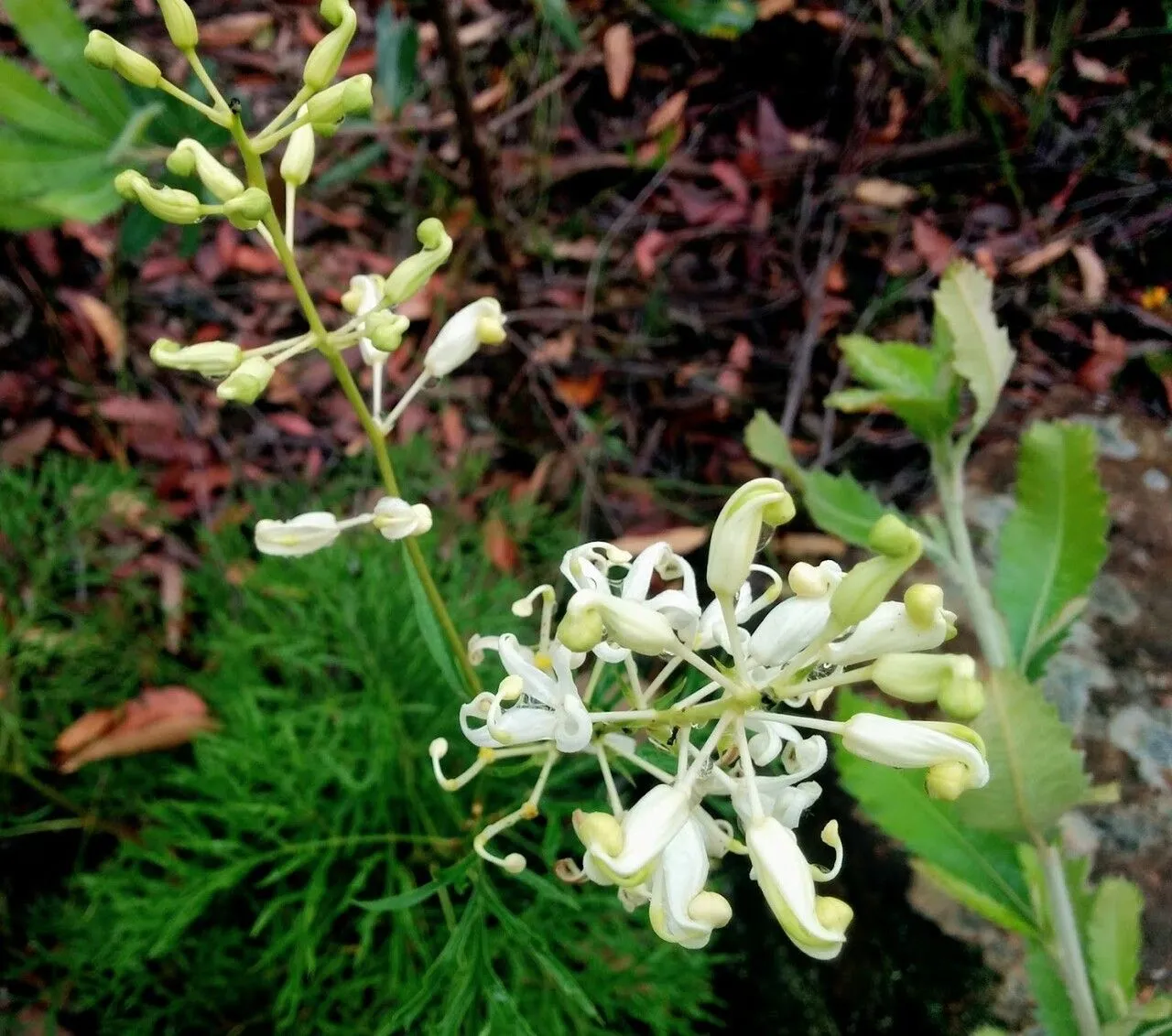
Author: (Sm.) R.Br.
Bibliography: Trans. Linn. Soc. London 10: 199 (1810)
Year: 1810
Status: accepted
Rank: species
Genus: Lomatia
Vegetable: False
Observations: SE. Queensland to NE. New South Wales
Crinklebush, known scientifically as Lomatia silaifolia, is a fascinating and resilient member of the Proteaceae family. First documented by Robert Brown in 1810, Crinklebush has since been recognized for its unique characteristics and ecological significance.
This evergreen shrub is native to a range extending from southeastern Queensland to northeastern New South Wales in Australia. Its adaptability to various environments within this region highlights its hardiness.
Crinklebush is easily identifiable by its intricately lobed, dark green leaves which give it a ‘crinkled’ appearance, hence the common name. The foliage provides a unique texture to the plant, making it a desirable choice for gardeners and landscapers seeking to add contrast and interest to their collections.
The plant’s flowers, while not the largest or most conspicuous, contribute significantly to its charm. Blooming predominantly from late spring to early summer, the small, creamy-white flowers are arranged in clusters, attracting a variety of pollinators including bees and butterflies. This not only aids in the plant’s reproduction but also supports the surrounding ecosystem by promoting biodiversity.
In its native habitat, Crinklebush plays an essential role in stabilizing soil and preventing erosion due to its robust root system. It thrives in poor soils where many other plants would struggle, making it an ideal candidate for rehabilitation projects in disturbed or degraded landscapes.
Caring for Crinklebush in cultivation is relatively straightforward. It prefers well-drained soil and can tolerate full sun to partial shade. Once established, it is remarkably drought-tolerant, reflecting its adaptation to the often harsh Australian climates.
Overall, Lomatia silaifolia, with its distinctive foliage and hardiness, is a valuable plant both ecologically and horticulturally. Its ability to enhance garden aesthetics while supporting local wildlife makes it a superb addition to any Australian native plant collection.
Eng: crinklebush, fern-leaf lomatia, parsleybush, wild parsley
En: Crinklebush, Fern-leaf lomatia, Wild parsley, Parsleybush
Fa: آبچکان کریمهای
Taken Jul 29, 2022 by Michal Svit (cc-by-sa)
Taken Jun 4, 2022 by Birgitta Tittel (cc-by-sa)
Taken Jan 6, 2019 by Andrew McNamara (cc-by-sa)
Taken Feb 13, 2022 by Alan Johnson (cc-by-sa)
© copyright of the Board of Trustees of the Royal Botanic Gardens, Kew.
Family: Myrtaceae Author: (F.Muell.) K.D.Hill & L.A.S.Johnson Bibliography: Telopea 6: 402 (1995) Year: 1995 Status:…
Family: Rubiaceae Author: Pierre ex A.Froehner Bibliography: Notizbl. Bot. Gart. Berlin-Dahlem 1: 237 (1897) Year:…
Family: Sapindaceae Author: Koidz. Bibliography: J. Coll. Sci. Imp. Univ. Tokyo 32(1): 38 (1911) Year:…
Family: Asteraceae Author: A.Gray Bibliography: Pacif. Railr. Rep.: 107 (1857) Year: 1857 Status: accepted Rank:…
Family: Fabaceae Author: Medik. Bibliography: Vorles. Churpfälz. Phys.-Ökon. Ges. 2: 398 (1787) Year: 1787 Status:…
Family: Aspleniaceae Author: (Cav.) Alston Bibliography: Bull. Misc. Inform. Kew 1932: 309 (1932) Year: 1932…